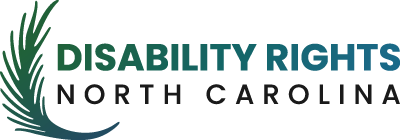TBI Program, Study, or Pilot
Type: Study
Agency Providing the Funding: US Health Resource Services Administration (HRSA) Federal TBI Program
Year Provided/Duration: 2009-2014
Funding Given To: Office of Acquired Brain Injury (OABI)
Population (Juvenile Justice, Criminal Justice, Parole, Probation, Jail, Prison, etc.,)
System Group
Juvenile Justice
Location
State Youth Correctional Facilities and county-Level Juvenile Probation Facilities
Purpose/Goal
The purpose of the pilot was to conduct screening to identify the presence of TBI among the 106,000 youth in the juvenile justice system to determine the presence of brain injury, and if a brain injury may have contributed their misbehavior/criminality. Offering referral for treatment and services to reduce recidivism, improve functioning for adolescents served, and improve access to community supports. (Texas Traumatic Brain Injury Advisory Council, 2014)
Screening Tool Used
What tool was used?
Brain Injury Screening Questionnaire (BISQ)
When is screening done?
At intake once juveniles are adjudicated to secure facilities. (Goodall, Chamberlain, McDonnell, & Joplin, 2013)
What happens after screening?
After screening, it was intended for the provisions of the appropriate array of services/therapies through partnerships across multi-system collaboratives, parental, school involvement, and educational programs. (Goodall, Chamberlain, McDonnell, & Joplin, 2013)
Who Conducted Screening?
Texas project staff conducts an interview with the child including a review of the medical records and evaluations if these are available. Then, they determine if the Brain Injury Screening Questionnaire (BISQ) needs to be completed. The Brain Injury Screening Questionnaire (BISQ) administration is computerized. If the juvenile has the capability of completing the test without assistance, it is a self-test. If not, trained staff assists the juvenile with completion. (Goodall, Chamberlain, McDonnell, & Joplin, 2013)
Data Collection
Tracking
Information on the method of tracking unavailable.
Findings
Results indicated that offenders who participated in the pilot project have had more than a 75% decrease in referrals to security by self or staff and in injury to self or others. Approximately 80% have demonstrated utilization of the therapy and have reduced recidivism rates. (Texas Traumatic Brain Injury Advisory Council, 2014)
The study found that 22% of youth in state facilities and 41% in county facilities met the criteria for at least one TBI. Assaults, falls, sports-related injuries and vehicle crashes were the most common causes of TBI. “These high rates of TBI are consistent with previous studies citing a significantly greater incidence of TBIs among juveniles on probation or incarcerated than among same-aged peers,” researchers concluded. Given the juvenile offenders’ young age at the time of the study, researchers expected that the prevalence of TBI among this high-risk population would increase as they age.
Researchers also highlighted a “disturbing finding” related to the timing of the brain injury: For most individuals who participated in the study, the brain injury preceded the person’s first criminal offense. For those in county facilities, about 79% reported having a brain injury before committing their first offense. For those in state correctional facilities, about 56% reported having a brain injury before committing their first offense. Researchers also found the group in the state setting had more cognitive symptoms (e.g., memory and attention problems), aggression and impulsivity than their peers who experienced their first brain injury after entering the justice system. They also committed more crimes that were violent, sexual or person-related than those whose first criminal offense occurred before their brain injury.
From the study’s findings that TBI preceded criminal offenses in a majority of cases, one cannot conclude that the injury causes criminality; however, researchers concluded that “it does provide strong evidence that TBI and subsequent criminal behavior are significant factors that contribute to arrest that are separate from other pre-morbid factors.”
(Goodwin & Teigen, 2019)
Report findings were extensive and cannot be added as PDF’s to our site. Please submit a request at the link above and we will send the report(s) via email within 24-48 business hours.
Community Resources
Information and Referrals
After screening, it was intended for the provisions of the appropriate array of services/therapies through partnerships across multi-system collaboratives, parental, school involvement, and educational programs. (Goodall, Chamberlain, McDonnell, & Joplin, 2013)
Trainings
A robust training and education program is in place for all Texas juvenile justice professionals, probation and parole officers, attorneys, judges, law enforcement agencies offering Continuing Education Units. A specialized web-based course for Texas teachers, school administrators, nurses, counselors, special education and 504 evaluators is in place to raise awareness of the needs and accommodations required by students with TBI. (Goodall, Chamberlain, McDonnell, & Joplin, 2013)
More than 300 professionals who work in juvenile justice, have been trained about TBI and how to use the Brain Injury Screening Questionnaire (BISQ). (Texas Traumatic Brain Injury Advisory Council, 2014)
Agency Contact Information
Name
Texas Health and Human Services – Office of Acquired Brain Injury
Website
Texas Health and Human Services – Office of Acquired Brain Injury
Phone Number
Sustainability
Information Unavailable
Advisory Board
Information Unavailable
How was this information acquired?
Information was acquired through online published reports.
References: For more information on this states work, please see references
Goodall, P., Chamberlain, K., McDonnell, A., & Joplin, K. (2013). Virginia collaborative policy summit on brain injury and juvenile justice: Proceedings report. Health Resources and Services Administration.
Goodwin, K., & Teigen, A. (2019). State approaches for addressing traumatic brain injuries in the juvenile justice system. Washington D.C.: National Conference of State Legislatures.
Texas Traumatic Brain Injury Advisory Council. (2014). Report of the Texas Traumatic Brain Injury Advisory Council. e Texas Traumatic Brain Injury Advisory Council.
Notes: Additional mentions from state leads/representatives
The project wanted the test to be administered in Spanish as well but has found this to be cost prohibitive. If needed, someone who speaks Spanish helps the child complete the screening process. A specialized “pilot within the pilot” cognitive rehabilitation therapy (CRT) program was developed by Dr. Wayne Gordon, for this grant to train youth offenders in the three El Paso County Justice Department programs, for offenders with the most serious offenses and highest recidivism rates. (Texas Traumatic Brain Injury Advisory Council, 2014)
